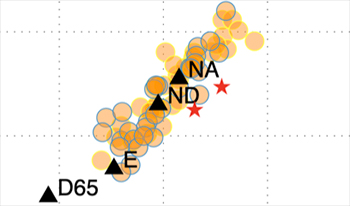
In colorimetry and color appearance modeling it is assumed that chromatic adaptation is reversible. Recent experimental results suggest that this might not be the case and that bidirectional models of chromatic adaptation might be needed. This paper describes a series of experiments designed to collect very-high precision corresponding colors data for sensory chromatic adaptation to test the hypothesis that chromatic adaptation is reversible for individual observers. The results indicate that there are small, but statistically significant, differences in corresponding colors due to changes in the previous state of adaptation. However the effect sizes are small and the number of repeated observations required to detect these differences is very large. Thus it is concluded that these differences are, while interesting, not problematic for practical colorimetry. In addition the application of the vk20 chromatic adaptation model for predicting such effects is further explored and its 15000K reference adaptation state is validated.